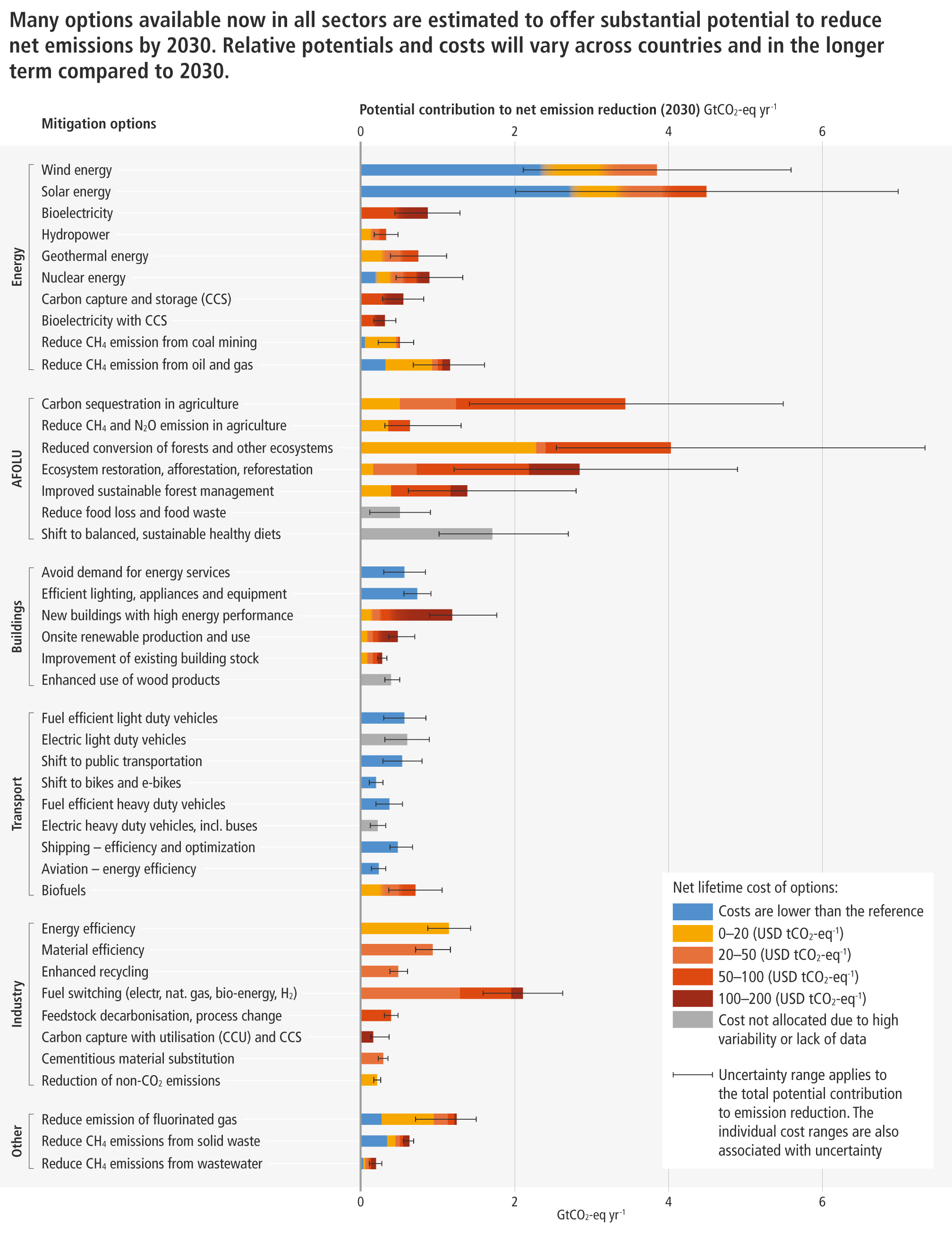IPCC Mitigation Report
On 4th April 2022 Working Group III of the Intergovernmental Panel on Climate Change (IPCC) published its report on Mitigation of Climate Change, part of its contribution to the IPCC’s Sixth Assessment Report.
It is important to note, when considering the reporting on this major report, that it was endorsed, or ‘signed off’ by 195 world governments, albeit with some of the usual wrangling before accepted wording was agreed.
Policies to the end of 2020 were putting the world on course to deliver global warming of 3.2°C.
Alok Sharma, President of COP26, has commented on this IPCC report that according to IEA calculations, the best case after COP26 if all the commitments pledged at COP26 were fully delivered, would put the world on course for warming of 1.8°C. As he noted –
“COP26 commitments were historic: but at this stage they are words on a page”.
UN Secretary General Antonio Guterres was more blunt –
“Some governments and business leaders are saying one thing – but doing another. Simply put, they are lying. And the results will be catastrophic.”
We should bear in mind that other Working Groups of the IPCC have warned that the difference between warming of 1.5°C and 2°C can be measured in terms of “hundreds of millions of people in poverty”, between losing all coral reefs or most of them.
Key Findings:
Average annual GHG emissions during 2010-2019 were higher than in any previous decade, but the rate of growth between 2010 and 2019 was lower than that between 2000 and 2009.
The unit costs of several low-emission technologies have fallen continuously since 2010.
Progress on the alignment of financial flows towards the goals of the Paris Agreement remains slow and tracked climate finance flows are distributed unevenly across regions and sectors.
Global emissions need to fall by 45% by 2030, but are on course to rise by 14%.
Carbon emissions need to peak by 2025 and to fall drastically after that. IPCC scientists put this in terms of “now or never” to take drastic action to mitigate emissions, really rapid and accelerated moves away from fossil fuel use for energy and transportation, building on the tumbling prices for solar and wind power.
Since publication of the report, some of its lead authors have expressed concerns that this implication that further increases in emissions can take place up to 2025 has been misunderstood, and in fact their belief is that drastic action is required immediately to curtail emissions and reverse the trend upwards - see https://www.bbc.co.uk/news/science-environment-6110406
All global modelled pathways that limit warming to 1.5°C (>50%) with no or limited overshoot, and those that limit warming to 2°C (>67%) involve rapid and deep and in most cases immediate GHG emission reductions in all sectors.
One image from the report stood out to us, Figure SPM.7, Overview of mitigation options and their estimated ranges of costs and potentials in 2030. This shows just how many options there are to reduce emissions, which ones can make the biggest difference, and which ones we really need to focus on driving costs down. It highlights the “all of the above” approach we need to take to tackle climate change, across the whole economy not just one or two sectors.
Governments worldwide are coping with rising inflation, sharply higher energy prices, and the effects of a cost of living crisis affecting energy, transport and food. This is due in part to supply shortages brought on by different rates of recovery from the Covid-19 pandemic. It is made much worse by the huge economic impacts of Russia’s war on Ukraine, and many Western governments are determined not to finance that by continued purchases of Russian fossil fuels. Some are responding to this by turning back to increased domestic fossil fuel production, or increased imports, of oil, gas and even coal, as if that had a future. Yet their own scientists are saying, as clearly as they can, that there is no future in fossil fuels: we have the shortest possible time in which to achieve a fundamental energy transition.
When we first started writing these articles for this website and blog, in 2020, one of our main aims was to strengthen the connections between the phenomenal energies of young climate activists with the best available climate science. We believed that youth action would be strengthened by that connection being reinforced. In the last two years, the science of climate change has been so powerfully and so clearly expressed that it is really more of a political issue.
The world’s leading scientists have done what they can to present to the world the best available summary of what is happening to our climate and the consequences it will have for life on earth. The world’s governments have signed off on the reports.
The question is now for us, and whether civil society and the world’s citizens can make governments that have endorsed the diagnosis sign up to the cure.
Selected coverage of the IPCC Working Group III report:

